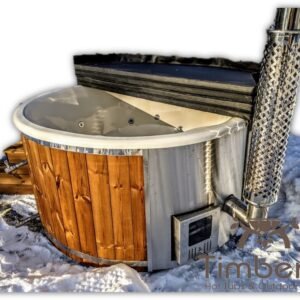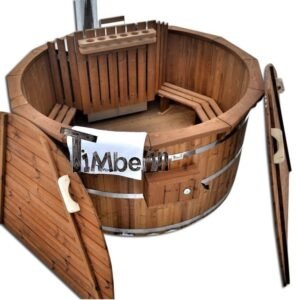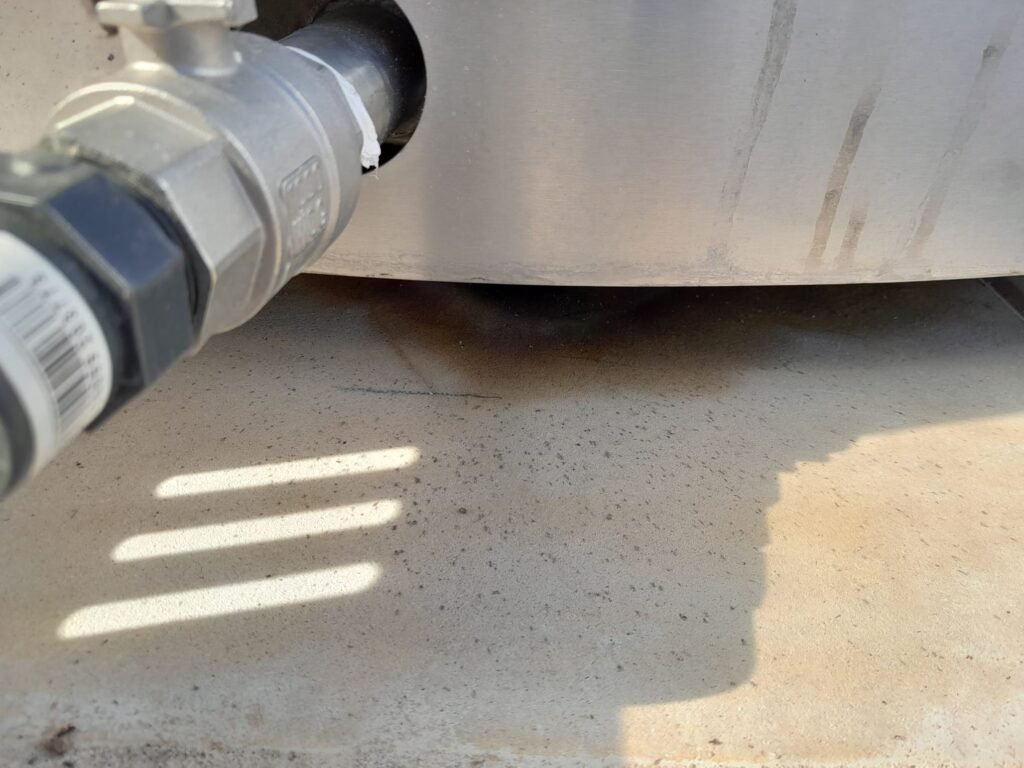Have you spotted a brownish liquid pooling beneath the integrated wood-burning stove in your hot tub setup? Don’t panic—this is a fairly common issue and usually isn’t a sign that something’s broken. In fact, there are a few natural and mechanical reasons for this, and several simple solutions to keep it under control.
Best Selling Models
-
 20% OFF!
20% OFF!Log Burner Hot Tub with Jets – TimberIN Rojal
From: €4,427From: €3,689 -
 Spacious!
Spacious!Square rectangular hot tub
From: €2,229 -
 For 2 persons!
For 2 persons!2 Person Hot Tub Wood Fired
From: €1,710 -
 External burner
External burnerWood heated Hot Tub
From: €2,199 -
 Wooden thermo
Wooden thermoBarrel Wooden Hot Tub Deluxe thermowood
From: €2,743 -
 Square model
Square modelHot Tub Square 2.2×2.2 m
€4,108
1. Condensation: A Common Cause
The leading reason behind the brown fluid is condensation. When you start a fire in the stove, the metal components begin heating up, but they start out cold—especially since they’re surrounded by the water in your tub. This temperature contrast causes moisture in the surrounding air to condense on the cooler surfaces before the stove fully heats up.
This effect is a lot like morning dew forming on grass: warm, moist air hits a cold surface and turns into water. That water, often mixed with trace particles from inside the stove, forms the brownish liquid that you see trickling out underneath.
2. Damp Firewood Can Contribute
Another frequent factor is moisture from the firewood. Even seasoned logs retain a small amount of moisture, but wood that hasn’t been properly dried will give off a lot more steam as it burns. That moisture, combined with soot and creosote, can create a dirty runoff that seeps out as a brown liquid.
Using dry, seasoned firewood helps significantly reduce this problem and makes for a more efficient burn.
3. Tips to Reduce Brown Liquid Buildup
Luckily, you can take some easy steps to minimize the appearance of this liquid and improve your stove’s overall performance:
a) Boost Airflow in the Fire Chamber
Make sure your fire gets enough oxygen. Good airflow encourages a hotter, cleaner burn, which lowers the chances of condensation and soggy residue forming inside the stove.
b) Enhance Chimney Draft
Weak suction in the chimney can lead to moisture and smoke staying inside the stove too long. Adding an extra meter or two of chimney pipe can improve airflow and help draw out steam and smoke more efficiently.
c) Keep the Drain Hole Clear
There should be a small hole beneath your stove to allow any collected liquid to drain out. This drainage is important—not just to avoid puddles, but also to keep the stove functioning properly. Blocked drainage can affect the fire’s performance and slow down the heating process.
Wrapping Up
Seeing a brown liquid under your wood stove might look alarming, but it’s usually nothing serious. It’s often the result of condensation and moisture in the firewood. By using dry logs, maintaining good airflow, ensuring proper chimney function, and keeping the drainage clear, you can prevent buildup and keep your hot tub heating smoothly.
Enjoy your soak and stay cozy!



